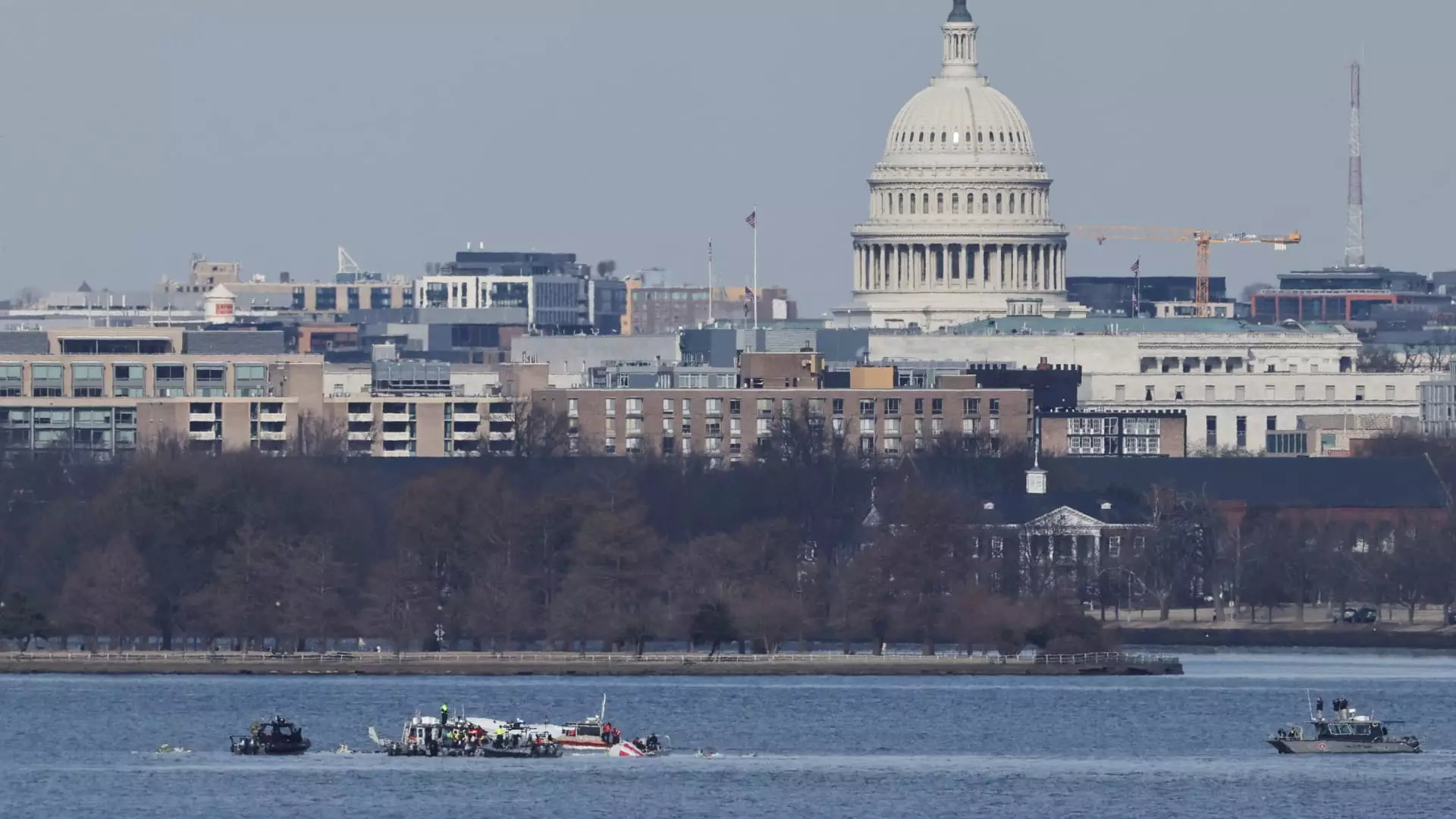In a tragic turn of events, a deadly collision between a Black Hawk helicopter and an American Airlines jet has left 67 lives lost, marking one of the most catastrophic aviation disasters in recent U.S. history. This incident occurred over the Potomac River near Washington, D.C., and the circumstances leading to the deadly clash are still shrouded in mystery. Investigators are now racing against time to uncover vital information that can shed light on the factors contributing to this calamity.
On a fateful Wednesday evening, while American Airlines Flight 5342 was on its final descent toward Reagan National Airport, it collided with the military helicopter, resulting in a massive fireball that consumed both aircraft. Flight 5342 was operated by PSA Airlines, a regional subsidiary of American Airlines, which provides critical connections across the U.S. At the heart of the investigation lie critical questions about altitude compliance and the adherence to established aviation protocols in one of the busiest airspaces in the country.
The Black Hawk was reportedly conducting a routine proficiency training flight at the time of the crash. According to Defense Secretary Pete Hegseth, this practice is standard for military operations in the area. Federal Aviation Administration (FAA) regulations stipulate that helicopters should maintain a maximum altitude of 200 feet while navigating near dense urban regions like Washington, D.C. This threshold is designed to ensure safety in an environment filled with commercial air traffic and numerous helicopter routes.
The National Transportation Safety Board (NTSB) has taken the lead in this ongoing investigation, meticulously gathering flight data and cockpit voice recordings from the aircraft. NTSB Chair Jennifer Homendy emphasized the need for due diligence: “It’s essential that we verify information and ensure accuracy before drawing any conclusions.” The aircraft’s black boxes have been sent to NTSB labs for in-depth analysis, making this phase of the inquiry crucial in piecing together the events that led to the tragedy.
Despite the ongoing investigation, preliminary information has begun to surface, suggesting that there might have been elevation compliance issues with the helicopter. Several notable figures, including former President Donald Trump, have expressed concerns over the altitude at which the Black Hawk was flying, suggesting that it exceeded the lawful height limit. This focus on the helicopter’s altitude brings into question the procedural safeguards in place to prevent such overlaps in air traffic.
In the wake of this disaster, the FAA has promptly instituted new flight restrictions for helicopters operating in the Washington, D.C. area, with exceptions for emergency situations. These adjustments underscore the complexities of managing one of the most congested airspaces in the nation—Reagan National Airport is renowned for having one of the busiest runways in the U.S. The tragic incident serves as a stark reminder of the unique dynamics that define aviation traffic in the heart of the nation’s capital.
It has also been noted that air traffic controller staffing was less than optimal at the time of the crash. Reports indicate that a controller who typically oversees helicopter operations was not present, as their responsibilities had been merged with another position. With a high volume of air traffic, this discrepancy raises critical questions about preparedness and regulatory compliance at one of the nation’s key airports.
This catastrophic accident signifies the end of a notably safe period for U.S. aviation, which had not experienced a fatal commercial crash since 2009 despite significant increases in passenger air travel. The last decade and a half saw comprehensive reforms in pilot training and operational protocols aimed at enhancing safety, particularly in busy airspaces. However, the recent uptick in close calls and near-misses has drawn the scrutiny of both lawmakers and aviation regulators, highlighting systemic issues that have persisted despite strides in safety measures.
This tragic event does not merely represent a loss of life; it signals an urgent need for reassessment of air traffic navigation and control practices in urban environments. As the NTSB continues its investigation, there will likely be calls for comprehensive reviews of helicopter operation protocols and airspace management to ensure such incidents never reoccur. The aviation community, particularly in metropolitan areas, must take these lessons to heart to foster a culture of safety and vigilance in the skies above.

